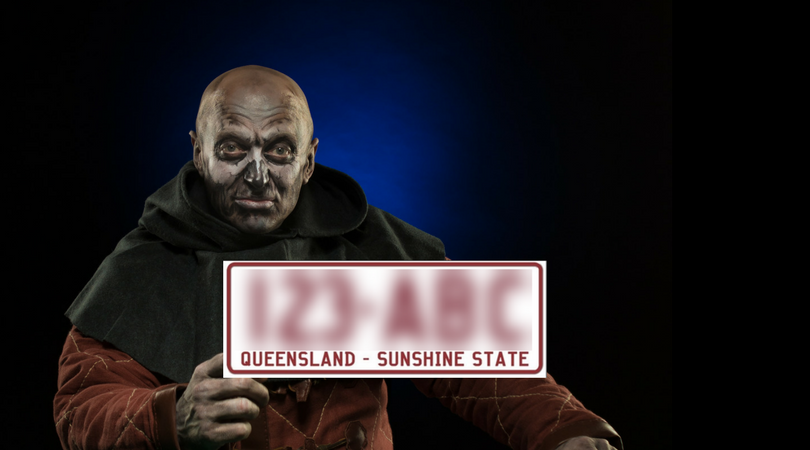WHAT HAPPENS WHEN YOU GET HIT BY A CAR
...AND YOUR BIKE CAMERA DOESN'T CAPTURE THE REGISTRATION NUMBER?

A lot of cyclists feel helpless after a hit and run because they are unable to identify the vehicle involved...
EMILY BILLIAU // Australia's Leading Lawyer for Cyclists
Perhaps the driver fled the scene of the accident or the rego plate is too blurry to read on your camera footage.
Your bike is trashed, you're in pain, and you're all on your own.
So who do you turn to?

WHO ARE THE TWO KEY PLAYERS?
...YOU MUST TALK TO THEM A.S.A.P!
Get the police involved early
If you are unable to identify the vehicle involved, it important that you act you promptly.
You should take steps to urgently report the incident to police.
Critically though, if police are unable to identify the vehicle that caused the accident, you may still be able to pursue civil action.
Your claim would proceed against the state insurer, the Nominal Defendant.
Who is The Nominal Defendant?
The Nominal Defendant is a statutory corporation established under the Motor Accident Insurance Act 1994 (MAIA).
It serves as an insurer of last resort.
One of it’s purpose is to provide access to compensation to persons injured as a result of the negligent acts of drivers of unidentified motor vehicles.
Unfortunately, claims against the Nominal Defendant can involve quite complex legal issues.
The legislative and procedural requirements that apply to bringing a claim are strict.

To get the police to take action, you have to take action. Getting the police involved early will help you later on. Make sure you note the officers and the station that you spoke with. If you need a hand with what to say then hit the big orange button below.
JUMPING THROUGH THE HOOPS
...HERE'S WHAT YOU NEED TO DO....

To succeed in a claim against the Nominal Defendant, you will need to be able to establish that you have undertaken due search and enquiry to identify the vehicle involved.
EMILY BIILIAU // Australia's leading Lawyer for Cyclists
What is the “Nommo Inquisition”?
Like all legal terms “due search and enquiry” can be vague.
Lawyers refer to claims against the Nominal Defendent colloquially as a “Nommo claim”.
...and if your claim is to succeed you need to fully exhaust all avenues YOURSELF to identify the vehicle.
You need to carry out the “Nommo Inquisition”.
In general terms, “due search and enquiry” means:
- …everything that you can reasonably do to
- attempt to locate and
- find the identity of the vehicle
- which caused the accident.
And the best advice is to overcook your efforts….leave nothing to chance.
And if you adopt this “nothing left to chance’ mindset you will turn “due search and inquiry’ into ‘The Nommo Inquistion’.
Because the phrase ‘due search and inquiry’ is vague the effort required to satisfy the ‘Nommo’ can vary dramatically from case to case.
Depending on….
- the place,
- time and
- nature of the accident
….due search and enquiry may be found sufficient in one matter, and insufficient in another.

The first step in deciding whether to locate the unidentified driver is to ask yourself "Am I doing the right thing?" Take the poll below to see what others think.
THERE IS A RIGHT WAY...
...TO SHOW YOU CARE...
In the matter of R –v- Nominal Defendant, a truck was driving on the Pacific Highway, not far from a particular Truck Stop, at approximately 6.00pm in the evening, when one of the wheels of the B-Double truck detached from the truck, striking the barrier and colliding with Mr R’s vehicle.
The truck did not notice that the wheel had become detached and did not stop. They were also unaware that an incident had occurred.
In an attempt to identify the truck the claimant did the following:
1. Placed an advertisement in a local newspaper;
2. Put up Truck Stop Notices, within a five kilometre radius of the incident site.
In such circumstances, it was accepted, given the
- time,
- locality and
- nature of the incident
that the due search and enquiry was reasonable and the Nominal Defendant accepted that the vehicle was unidentified.

Community notice boards can be an integral part of your 'inquisition' campaign'. They need to be local to where the incident was. Putting up a notice on a public board in Sweden probably won't help your case if the accident happened in Birdsville.
THE WRONG WAY...
...AND HOW TO CORRECT IT...
In the matter of L –v- Nominal Defendant, an incident occurred on a local suburban Street in Ashfield New South Wales, where
- a pedestrian was
- struck by a vehicle
- at approximately 4.00pm and
- the vehicle did not stop to render assistance or provide details.
In this matter, newspaper advertisements were undertaken and the Nominal Defendant identified that:
“such enquiry was not reasonable and determined that “due search and enquiry” had not been fulfilled”
Why?
It was suggested that in such a circumstance, given the time and place of incident, a door knock and postal drop would have rendered further assistance.
It is noted that such enquiries were then undertaken by the claimant, resulting in no witnesses being found.
Accordingly, upon forwarding further information to the Nominal Defendant, it was ultimately determined that “due search and enquiry” had been fulfilled.
It is clear from these two examples, that “due search and enquiry” has no one meaning.

Door knocking doesn't have to be hard, nor should it be intimidating. Most people will be happy to help you if they saw something. People want to live in safe neighborhoods so will generally do anything they can to help a victim of a hit and run that happened in their street. If you need a plan or a script of what to ask for click on the big orange button below.
THE ULTIMATE INQUISITION CHECKLIST
...THE QUICK AND EASY WAY TO ENSURE YOU HAVE DONE ENOUGH!

Whilst this list seems overwhelming, a slip-shod approach to finding the offending driver could cost you tens or even hundreds of thousands of dollars in lost compensation.
EMILY BILLIAU // Australia's Leading Lawyer for Cyclists
The right way is to leave no stone unturned and follow the checklist above.
The wrong way is to leave the investigation in the hands of others and/or do a half-way job.
It is simply not worth the risk.

